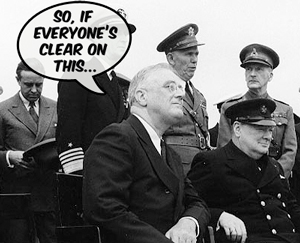 An intriguing article published by the London Daily Telegraph on this year’s anniversary of Armistice Day told the story of a “fake London” that France built during World War I to trick German planes into bombing a city to the north rather than the City of Lights.
An intriguing article published by the London Daily Telegraph on this year’s anniversary of Armistice Day told the story of a “fake London” that France built during World War I to trick German planes into bombing a city to the north rather than the City of Lights.
The French began to dummy up buildings, the Champs-Elysées, factories and railway stations but didn’t complete the construction before the war ended. Without a highly developed radar system, enemy planes might be fooled into attacking the wrong site and bombing the phony city.
Is your “enemy’s” radar trained on you? What signals are you giving out that might allow your competitors to understand your strategy, to follow your trail? Does that give them a competitive advantage in the marketplace because they’re able to read these signals and anticipate and predict your destination?
A strong thought leader is less concerned about leaving a trail for competitors than blazing the trail for the industry. Yes, a certain amount of transparency of your own company’s strategy is a result of leading the industry in a particular direction.
Obviously as a thought leader, you believe the market will follow you, so you must clearly identify the destination. Others in the industry will therefore assume you’re leading your own company in that direction.
But that doesn’t mean you need to “give away the recipe for the secret sauce.” Thought leaders are skillful at being strategically specific when it applies to the industry and tactically general when it applies to their company. It’s a balancing act.
Are you able to lead the way in the industry without giving out such unambiguous signals about your company’s strategy that your competitors can imitate –or block – your tactical approaches to delivering on that strategy? Act, assess, then act. We’re here to help.
 Franklin Roosevelt once said, “All our great presidents were leaders of thought at times when certain ideas in the life of the nation had to be clarified.”
Franklin Roosevelt once said, “All our great presidents were leaders of thought at times when certain ideas in the life of the nation had to be clarified.”




